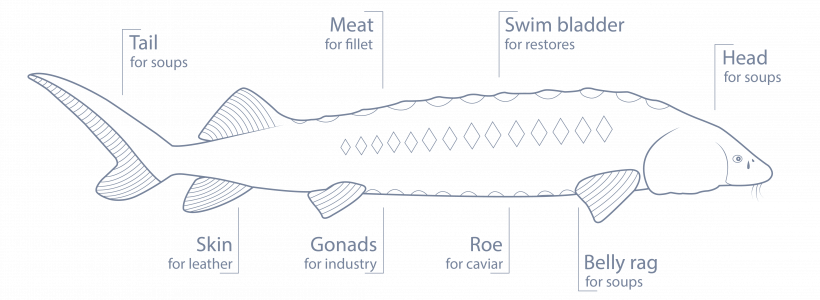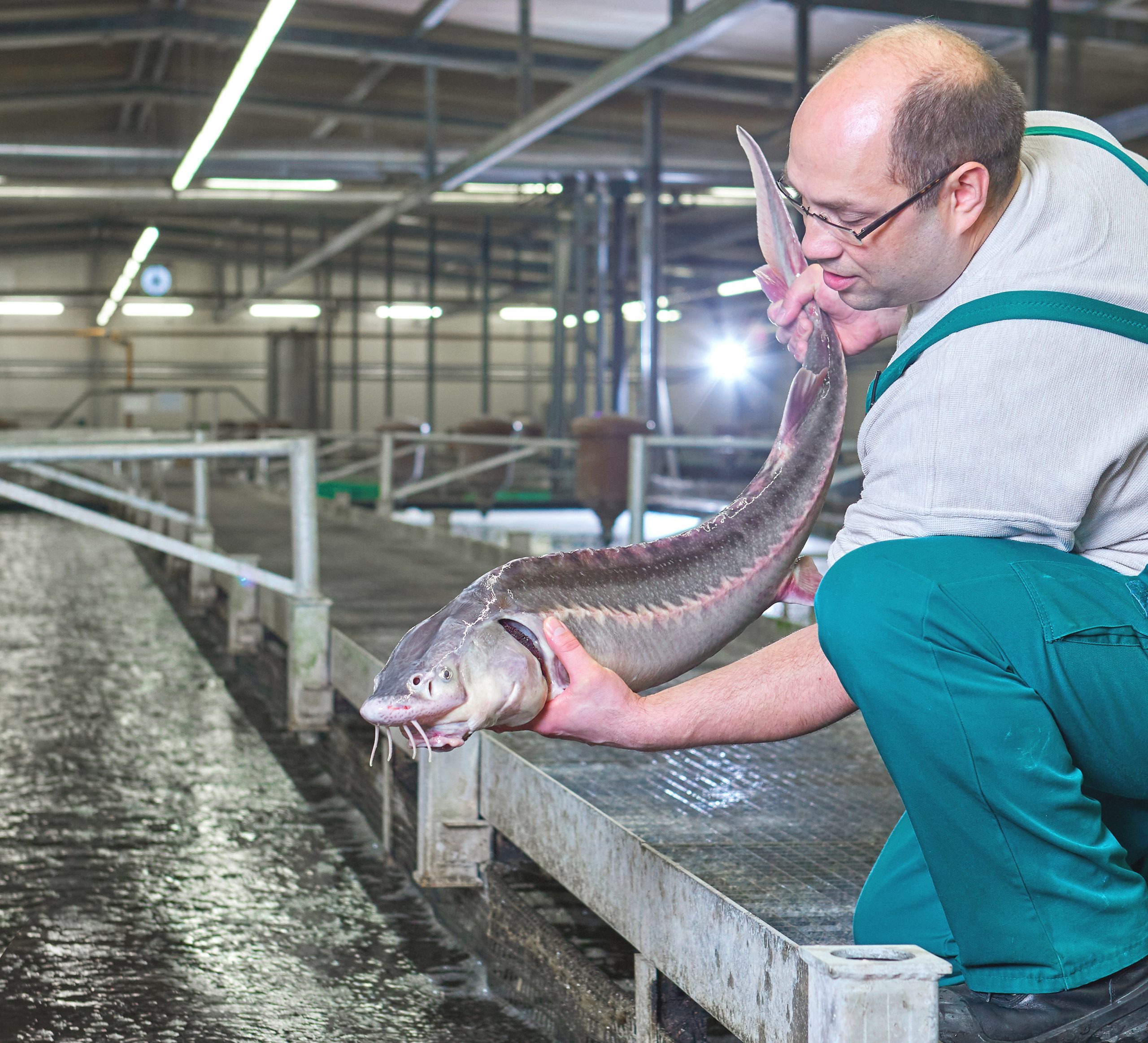We use almost completely all areas of the sturgeon

The sturgeon is a cartilaginous fish and has lived on this planet almost unchanged in its appearance since primeval times (about 200 million years). This makes this fish species one of the oldest animals at all. A large part of the sturgeon family are pure freshwater fish. Nevertheless there are sturgeon species that hatch in fresh water and then live in salt water. These return to their spawning grounds for reproduction. All sturgeon species are threatened with extinction due to man-made changes in river courses, such as the construction of dams, or their pollution and the rampant wild fishing in the past. Since 1998 all sturgeon species are protected by the Washington Convention on International Trade in Endangered Species of Wild Fauna and Flora. In 2006 the UN species protection authority CITES banned the trade with wild caviar. These measures protect the wild sturgeon population. Only the trade of caviar from aquacultures is legal with the appropriate permits from the authorities. Our aquaculture is of course certified according to the latest EU and CITES guidelines. The responsible veterinarians and authorities regularly monitor our operation.

The sturgeon is a cartilaginous fish and has lived on this planet almost unchanged in its appearance since primeval times (about 200 million years). This makes this fish species one of the oldest animals at all. A large part of the sturgeon family are pure freshwater fish. Nevertheless there are sturgeon species that hatch in fresh water and then live in salt water. These return to their spawning grounds for reproduction. All sturgeon species are threatened with extinction due to man-made changes in river courses, such as the construction of dams, or their pollution and the rampant wild fishing in the past. Since 1998 all sturgeon species are protected by the Washington Convention on International Trade in Endangered Species of Wild Fauna and Flora. In 2006 the UN species protection authority CITES banned the trade with wild caviar. These measures protect the wild sturgeon population. Only the trade of caviar from aquacultures is legal with the appropriate permits from the authorities. Our aquaculture is of course certified according to the latest EU and CITES guidelines. The responsible veterinarians and authorities regularly monitor our operation.

SPECIALITIES
The sturgeon is an adaptable fish and is naturally boneless. We process the sturgeon almost completely. Because not only caviar and sturgeon fillets are highly valued, but also the skin, swim bladder as well as head, tail, gonad and belly flaps.
PROTECTION OF NATURE
All sturgeon species are protected since 1998 by the Washington Convention on International Trade in Endangered Species. In 2006, the UN species protection agency CITES completely banned the trade of wild caviar. Thus the wild existence of the sturgeon is to be protected.
HATCHERY
Due to its adaptability, the sturgeon has adapted to the environment of an aquaculture. The breeding of sturgeon has developed so well in recent years that the caviar is in no way inferior to wild caviar in taste, appearance and consistency.

